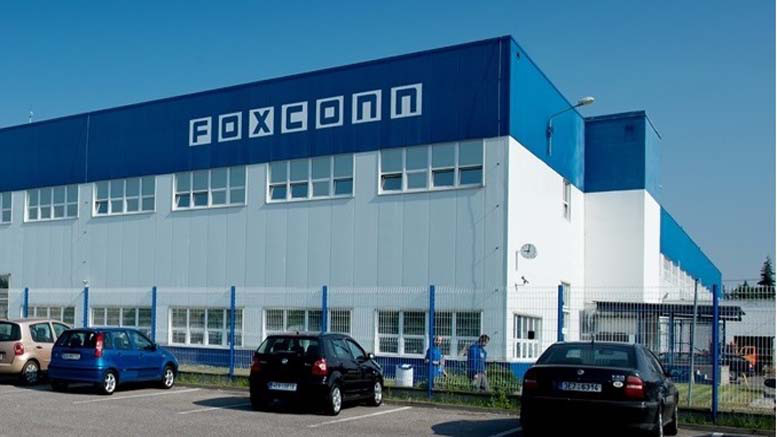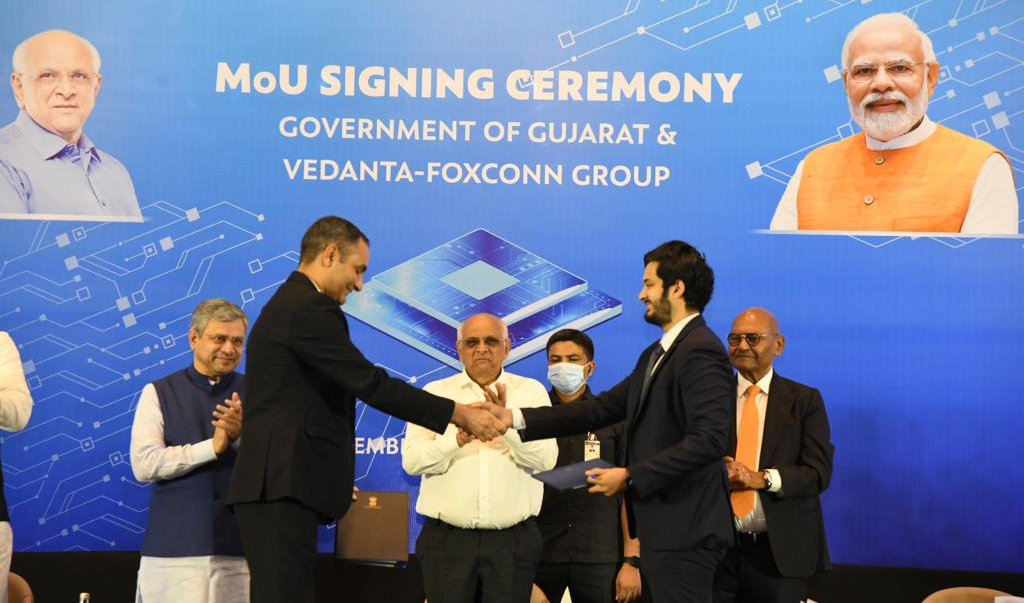Foxconn’s Abandoned $19.5 Billion Chip Plan: Minister Asserts “India is Just Getting Started”

Foxconn’s Abandoned $19.5 Billion Chip Plan: Minister Asserts “India is Just Getting Started”
The Indian government responded to Foxconn’s withdrawal from the semiconductor joint venture with Vedanta by stating that it has no impact on India’s Semiconductor Fab goals. The government expressed confidence in its semiconductor manufacturing plans and highlighted the leadership of Prime Minister Narendra Modi. It emphasized that betting against India under PM Modi’s leadership would be unwise, indicating the country’s determination to pursue its semiconductor ambitions despite this setback.
Foxconn’s decision to withdraw from the semiconductor joint venture with Vedanta, despite their previous deal to build production plants in Gujarat, is seen as a setback for the development of semiconductor manufacturing in India.

However, the government’s statement indicates that it remains committed to its Semiconductor Fab goals and expresses confidence in India’s potential under PM Modi’s leadership. The withdrawal of Foxconn may require the government to explore alternative avenues or partnerships to continue advancing its semiconductor ambitions in the country.
Foxconn’s decision to not move forward with the joint venture with Vedanta has raised questions about the specific reasons behind the withdrawal. Without further elaboration from Foxconn, the exact factors influencing their decision remain unclear.
However, the statement from the Indian government suggests that the withdrawal will not deter India’s semiconductor ambitions and reinforces their confidence in the country’s potential for growth under PM Modi’s leadership. The government’s response indicates its determination to continue pursuing its goals in the semiconductor sector, potentially exploring alternative partnerships or strategies to advance domestic semiconductor manufacturing in India.

Foxconn’s statement indicates that they had collaborated with Vedanta for an extended period to materialize their semiconductor plans. However, the decision to terminate the joint venture was reached through mutual agreement.
Foxconn expressed its intention to dissociate itself from the entity, which is now under Vedanta’s complete ownership. While the specific reasons for the mutual decision are not disclosed, it highlights a shift in the partnership dynamics and raises questions about the future trajectory of semiconductor development in Gujarat.
The Vedanta-Foxconn joint venture, which was intended to establish India’s first semiconductor production plant, a display fab unit, and a semiconductor assembling and testing unit on 1000 acres of land in Ahmedabad, had a projected investment of $19.5 billion. However, Foxconn’s recent announcement of its withdrawal from the joint venture has cast doubt on the realization of these plans.
![]()
The Indian government, while acknowledging Foxconn’s decision, remains optimistic about India’s Semiconductor Fab goals and emphasizes its commitment to advancing the country’s semiconductor industry under the leadership of Prime Minister Narendra Modi.
Union Minister Rajeev Chandrasekhar’s response to Foxconn’s withdrawal from the joint venture with Vedanta reflects the government’s hands-off approach to private business decisions. Chandrasekhar emphasized that it is not the government’s role to interfere in the partnership choices of private companies. He further stated that both Vedanta and Foxconn are now free to pursue their strategies independently in India and collaborate with suitable technology partners in the semiconductor and electronics sector.
Prime Minister Narendra Modi had hailed the Vedanta-Foxconn joint venture as a significant move towards strengthening India’s chipmaking capabilities. The announcement of the deal in Gujarat last September was considered a significant boost to the “Make in India” initiative and the government’s efforts to prioritize chip manufacturing. The partnership was seen as a strategic step towards establishing a semiconductor production ecosystem in the country and enhancing India’s self-reliance in the electronics industry.

Rejecting the notion that Foxconn’s decision to withdraw from the joint venture with Vedanta was a setback for India’s indigenous semiconductor industry, Union Minister Rajeev Chandrashekar expressed confidence in India’s semiconductor ambitions under Prime Minister Narendra Modi’s leadership.
He emphasized that it would be unwise to underestimate India’s potential and stated that the country is still in the early stages of its semiconductor journey. Chandrashekar’s statement reflected optimism about India’s ability to forge ahead and achieve its goals in the semiconductor sector.
The minister highlighted the significant progress made in India’s strategy to catalyze the semiconductor ecosystem since Prime Minister Narendra Modi approved the country’s semiconductor strategy and policy. He emphasized that over the past 18 months, India has witnessed rapid advancements in its efforts to develop and promote the semiconductor industry. This statement underscores the government’s commitment to driving the growth and development of the semiconductor sector in India.

Foxconn expressed its confidence in the direction of India’s semiconductor development and affirmed its commitment to supporting the government’s “Make In India” ambitions. The company, renowned for its assembly work for Apple products, stated its intention to establish a variety of local partnerships that align with the stakeholders’ requirements. This statement emphasizes Foxconn’s ongoing support for India’s semiconductor industry and its dedication to contributing to the country’s manufacturing ecosystem.
The government maintains its confidence in attracting investors for chipmaking in India, despite the withdrawal of Foxconn from its joint venture with Vedanta. Micron, a major semiconductor company, recently announced its investment of up to $825 million in a chip testing and packaging unit in the country.
Although this investment is not for manufacturing, it signifies the growing interest in India’s semiconductor sector. With the support of the government and the state of Gujarat, the total investment in the sector is expected to reach $2.75 billion. This demonstrates the ongoing commitment to developing and expanding India’s chipmaking capabilities.
India recognizes the importance of developing its semiconductor industry and reducing its dependence on imports. To promote domestic chip manufacturing, the government introduced a $10 billion incentive scheme, which has attracted three applications for setting up semiconductor plants.
With a projected semiconductor market worth $63 billion by 2026, India aims to boost local production and become self-reliant in this critical sector. By fostering a favorable investment climate and encouraging indigenous manufacturing, the country aims to strengthen its position in the global semiconductor market.





